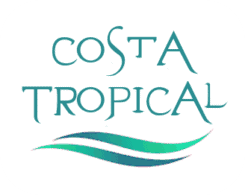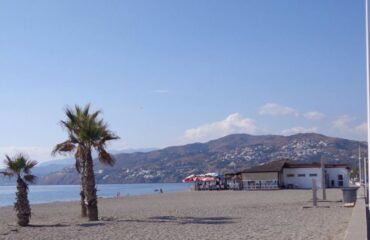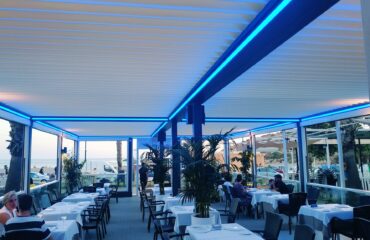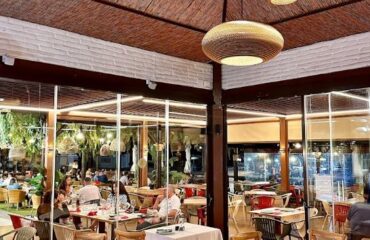- Home
- Listings
- Things To See & Do
- Car Hire
- News
- Properties
- What’s On
ES
Food & Drink
Discover the gastronomical delights of the Costa Tropical
Costa Tropical is renowned for its diverse and delicious gastronomy, reflecting the region’s rich cultural heritage and abundant natural resources. From fresh seafood caught along the coast to the flavorful fruits grown in the fertile valleys, the local cuisine offers a delightful fusion of flavors and influences. Whether you’re indulging in traditional dishes like “pescaíto frito” (fried fish) or sampling innovative creations at upscale restaurants, every bite tells a story of the land and sea. With its vibrant markets, quaint taverns, and seaside eateries, Costa Tropical invites visitors to savor the authentic taste of Andalusia in every mouthful.
Seafood takes center stage in many dishes, showcasing the freshest catches from the Mediterranean Sea. From succulent Motril’ quisquillas (small prawns) to tender calamari, the coastal cuisine offers a delightful array of marine delicacies. Do not miss the iconic “espetos” at the beachside chirinquitos, they are a must-try for any seafood enthusiast. They consist of skewered sardines or other small fish, seasoned with sea salt and grilled over an open flame on a wooden skewer or stick. This simple yet flavorful preparation allows the natural flavors of the fish to shine through, resulting in tender, smoky delicacies with a deliciously charred exterior.

The influence of Andalusian cuisine is unmistakable, with dishes like “gazpacho” and “salmorejo” offering refreshing relief on warm summer days. These cold soups are made with tomatoes, garlic, peppers, and olive oil. They’re really popular in the region. There are many ways to make them, and cooks can be creative. Salmorejo is thicker and smoother because it has bread in it, while gazpacho is more like a thin soup.
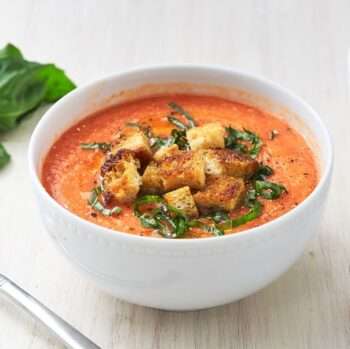
The abundant orchards of the Costa Tropical in Granada are renowned for yielding an array of fresh produce, particularly tropical fruits like avocados, mangoes, and cherimoyas. These fruits thrive in the region’s tropical climate, characterized by mild winters and warm summers with abundant sunshine. It is this unique climate that allows these fruits to flourish, making them exclusive to the area. Incorporating these tropical delights into various culinary creations, such as salads, desserts, and savory dishes, adds a distinct local touch to the cuisine of the Costa Tropical.
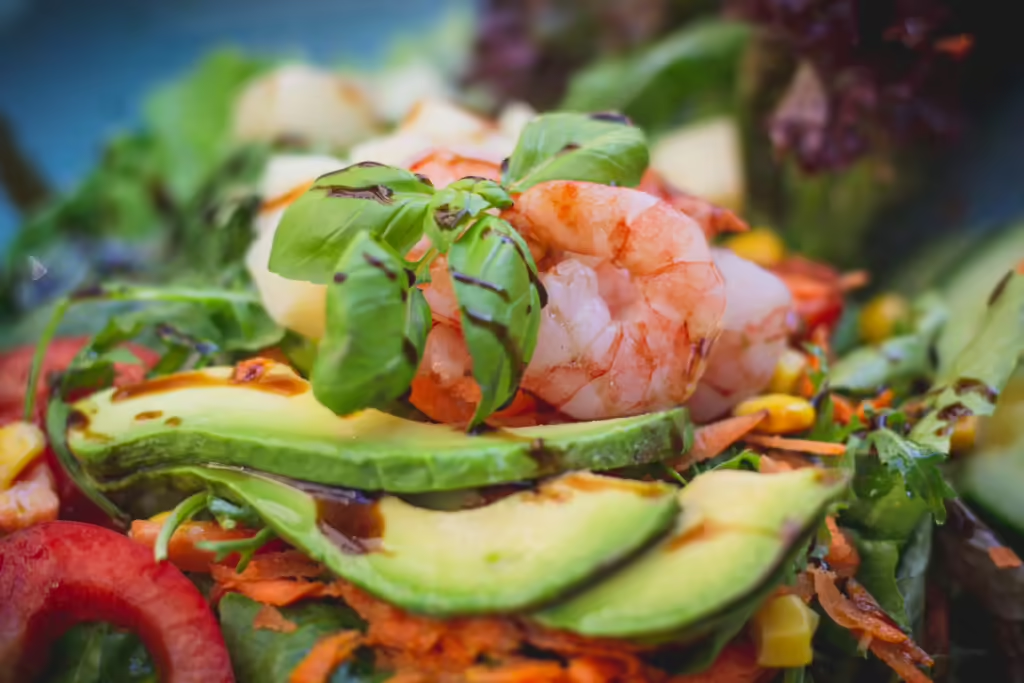
Of course, no exploration of this region’s gastronomy is complete without a taste of its wines. The vineyards, nestled against the backdrop of the Sierra Nevada, yield a variety of grapes that result in exceptional wines. From robust reds to crisp whites, each sip tells a story of the terroir and dedication of local winemakers.
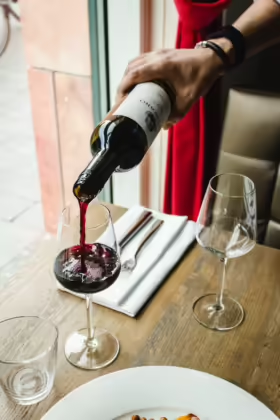
With its blend of fresh, high-quality ingredients and centuries-old culinary traditions, the gastronomy of the Costa Tropical offers a truly unforgettable dining experience. Whether in a charming beachside tavern or a rustic hillside restaurant, every meal here is a celebration of the region’s bountiful harvest and the passion of its chefs.
Different types of menus in Costa Tropical restaurants
When dining in Spain, one is met with a delightful array of menu options, each offering a unique culinary experience. Two of the most common choices are “a la carta” and “menú del día.” These terms may sound familiar, but understanding the nuances between them can greatly enhance your dining experience. Let’s embark on a journey to unravel the distinctions and discover the essence of these dining options in Spanish restaurants.
A la carta
“A la carta” translates to “off the card” in English. This type of menu allows diners to order individual dishes separately, choosing from a comprehensive list of options. Each dish is priced individually, offering flexibility in creating a customized dining experience. This menu style is ideal for those who have specific preferences or dietary restrictions, as it allows for a tailored selection. “A la carta” dining is typically available during both lunch and dinner hours, and it’s a popular choice for special occasions or when patrons are looking for a more extensive culinary exploration.
Menú del día
“Menú del día” literally means”menu of the day.” Most restaurants with a “menú del día” have it written outside on a chalkboard. This is a fixed-price menu (the average price of a “menú del día” goes from 10 to 15 euros), often offered during lunch hours on weekdays. It provides a cost-effective way to enjoy a complete meal, as it includes several courses, usually a starter, a main course, dessert, and a beverage. The dishes available on the “menú del día” are pre-selected by the restaurant and may vary each day. The menu is designed to provide a balanced and satisfying meal. It often includes options like salads or soups for starters, followed by a choice of meat, fish, or vegetarian dishes for the main course. In most cases, the menu includes a beverage such as water, wine, or a soft drink, allowing diners to enjoy a complete dining experience. Many restaurants take advantage of fresh, seasonal ingredients for their menu offerings, ensuring that the dishes are flavorful and in line with local culinary traditions. Restaurants also incorporate regional specialties or chef’s specials into their “menú del día,” providing a unique and authentic dining experience.
This menu style is favored by locals and workers seeking a convenient and budget-friendly lunch option. For travelers, the “menú del día” offers an excellent opportunity to sample traditional Spanish cuisine at a reasonable price, without compromising on quality. It’s an excellent way for diners to experience a variety of Spanish flavors without the need to make multiple individual choices.
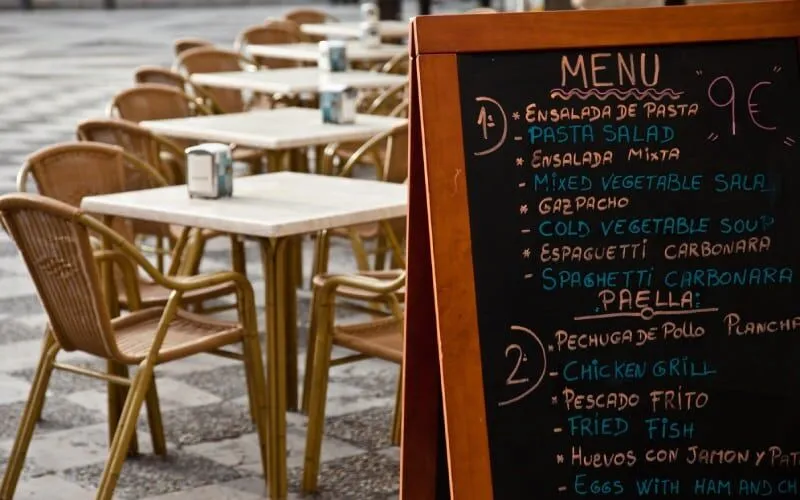
Some useful sentences to help you order your meal in Costa Tropical restaurants
Useful Spanish sentences when ordering food:
-“I would like…”
(Me gustaría…)
-“Could I have…?”
(¿Me puede poner…?)
-“I’ll have the…”
(Voy a tomar el/la…)
-“I want…”
(Quiero…)
-“For starters, I’ll have…”
(De primero, voy a tomar…)
-“For the main course, I’ll have…”
(De segundo, voy a tomar…)
-“Could you make it a bit spicier/milder, please?”
(¿Podría hacerlo un poco más picante/suave, por favor?)
-“Could I get some extra…?”
(¿Podría traerme un poco más de…?)
-“I’m allergic to…”
(Soy alérgico/a a…)
-“Is this dish vegetarian/vegan?”
(¿Este plato es vegetariano/vegano?)
-“Could you recommend a local specialty?”
(¿Podría recomendarme una especialidad local?)
Useful Spanish sentences when ordering drinks:
-“I would like a…”
(Me gustaría un/una…)
-“Could I have a glass of…?”
(¿Podría traerme un vaso de…?)
-“I’ll have a bottle of…”
(Pediré una botella de…)
-“Do you have any non-alcoholic options?”
(¿Tienen opciones sin alcohol?)
“Could I see the wine list, please?”
(¿Podría ver la carta de vinos, por favor?)
-“I prefer my coffee/tea with/without sugar/milk.”
(Prefiero mi café/té con/sin azúcar/leche.)
-“A cappuccino, please.”
(Un cappuccino, por favor.)
-“I’d like a local beer.”
(Quisiera una cerveza local.)
-“Could I have the bill, please?”
(¿Me trae la cuenta, por favor?)
-Mesa para dos, por favor – Table for two, please
Useful Spanish food terms:
Salt – Sal
Pepper – Pimienta
Sugar – Azúcar
Milk – Leche
Butter – Mantequilla
Egg – Huevo
Cheese – Queso
Fruit – Fruta
Vegetables – Verduras
Meat – Carne
Fish – Pescado
Chicken – Pollo
Pork -Cerdo
Beef – Ternera
Rice – Arroz
Potato -Patata
Soup – Sopa
Salad – Ensalada
Useful Spanish drinks terms:
Water – Agua
Tea- Té –
Coffee – Café
Milk – Leche
Beer – Cerveza
Wine – Vino
Juice – Zumo
Soda – Refresco
Cocktail – Cóctel
Whisky – Whisky
Rum – Ron
